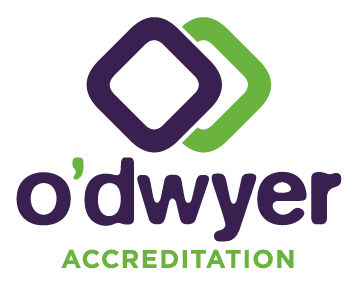Is this the response you get when you ask staff to update their procedures and methods? Could it be because they are difficult to read?
When was the last time you reviewed the format and structure of your laboratory policies and procedures?
Don’t let a stack of complicated or out-of-date documents compromise your quality standards. Not when your business success depends on it.
Instead, put aside some time to reorganise and revise them by following our five easy steps for writing user-friendly lab management documents.
Step 1. Define the types of lab documents
Let’s face it. There are so many different names for the document types found in labs:
Policies, SOPs, procedures, methods, guidelines, work instructions, technical instructions, SWMs, forms, and templates – to name just a few.
What’s more, individual organisations will often use the same terms to mean different things.
Here’s a simple framework that can help:
- Policies: explain what we do
- Procedures, SOPs, methods, guidelines: explain how we do it
- Work instructions, technical instructions, forms: provide step-by-step details
Collate this information about your lab in writing. Then include it in the relevant document management procedure (SOP, method, guideline).
Also note the relationships between the documents, what information each should contain, and the intended audience of each document.
PRO TIP: Include a flowchart in your quality manual to show what types of documents you will find, and where.
Step 2. Understand the high-level processes
The structure and organisation of your lab documents should ideally follow the main processes of your organisation.
Start by constructing a high-level process map for your organisation. Then group the documents according to this.
A process map for a routine lab looks something like this example.
Although, depending on your business model, each process step may have more or less content than other laboratories. For example, your lab might include other functions such as on-site work and method development.
There might be processes that you don’t need a detailed procedure for – if the process works well and is visible to everyone, is a document going to help?
That’s why it’s important to develop a process map relevant to your organisation.
Step 3. Establish the content of the document
When writing SOPs, methods, and procedures, it’s crucial to use a set format for all headings.
A clear and consistent heading structure helps your staff know what to write about. It also makes it easier for readers to find the information they need.
For the document content, there are many different document structures to choose from. Try starting with the following subheadings, and add extra sections if necessary:
1. Purpose
Describe the purpose of the process you’re describing. In other words, what’s the outcome? For example, the purpose of a pathology method explains what clinical conditions the test assists in diagnosing.
2. Scope
Explain what the document does and doesn’t cover. Where does this process begin and end? Does it cover all of the roles or just some of them?
3. Process description
Write out the process in detail and step-by-step, including as much information as required. But don’t reproduce information that’s already covered somewhere else. For example, if your laboratory information management system has plenty of online help, you won’t need to include much detail about test codes.
4. Related documents
List any other company documents that staff need to use or refer to.
5. References
List any external standards, codes, and specifications that the process must comply with. Then, whenever those external documents are updated, you’ll be able to quickly find which procedures need updating. Plus, it’s incredibly helpful for auditors too.
Step 4. Organise your content so it’s user friendly
Once you start writing each of the documents, the section that needs the most focus is the process description.
Since this section holds all the important “to-dos” in the process, it’s essential you set it out in a logical and an easy-to-read format.
Here are some helpful tips:
- Sequence the content so it flows clearly from start to finish. If you mapped the process, include the process map on the first page (a process map can show where different departments get involved and where other processes branch off).
- Use numbered headings and subheadings to help the reader quickly find the relevant content. As a rule, use no more than four to five subheadings in each section, because there are only so many ideas our brains can hold onto at once!
- Consider including a table of contents for any document more than five to ten pages long (or set your own standard for this).
- If some steps in the process require detailed instructions, decide whether to include them in the procedure (which is okay if it’s just a few lines). Or whether you should write a separate instruction document.
Step 5. Edit and polish the final text
Lastly, take some time to edit your final document for spelling, grammar, and clarity.
Make sure you cover these three elements:
- Review the text in your document closely, applying these Plain English guidelines to improve readability. Tips include:
- Use the shortest word possible to convey the correct meaning
- Use active verbs (such as: use, write, make, perform)
- Use pronouns (such as “we” and “you”) to engage the reader
- Number the headings and make sure they’re clearly distinguishable from the text.
- Leave plenty of white space in and around the content. And remember that readers need MORE white space when reading on a screen.
Want some help writing your lab management documents?
We get it. Sometimes there just aren’t enough hours in the day. But having a clear structure to follow makes it easier to work through and make your documents useful.
That’s why we use our experience with procedures and policies to guide organisations like yours through writing high-quality lab management documents.
So, if you’re short on time or not quite sure where to start with documenting your systems, give us a call today.



